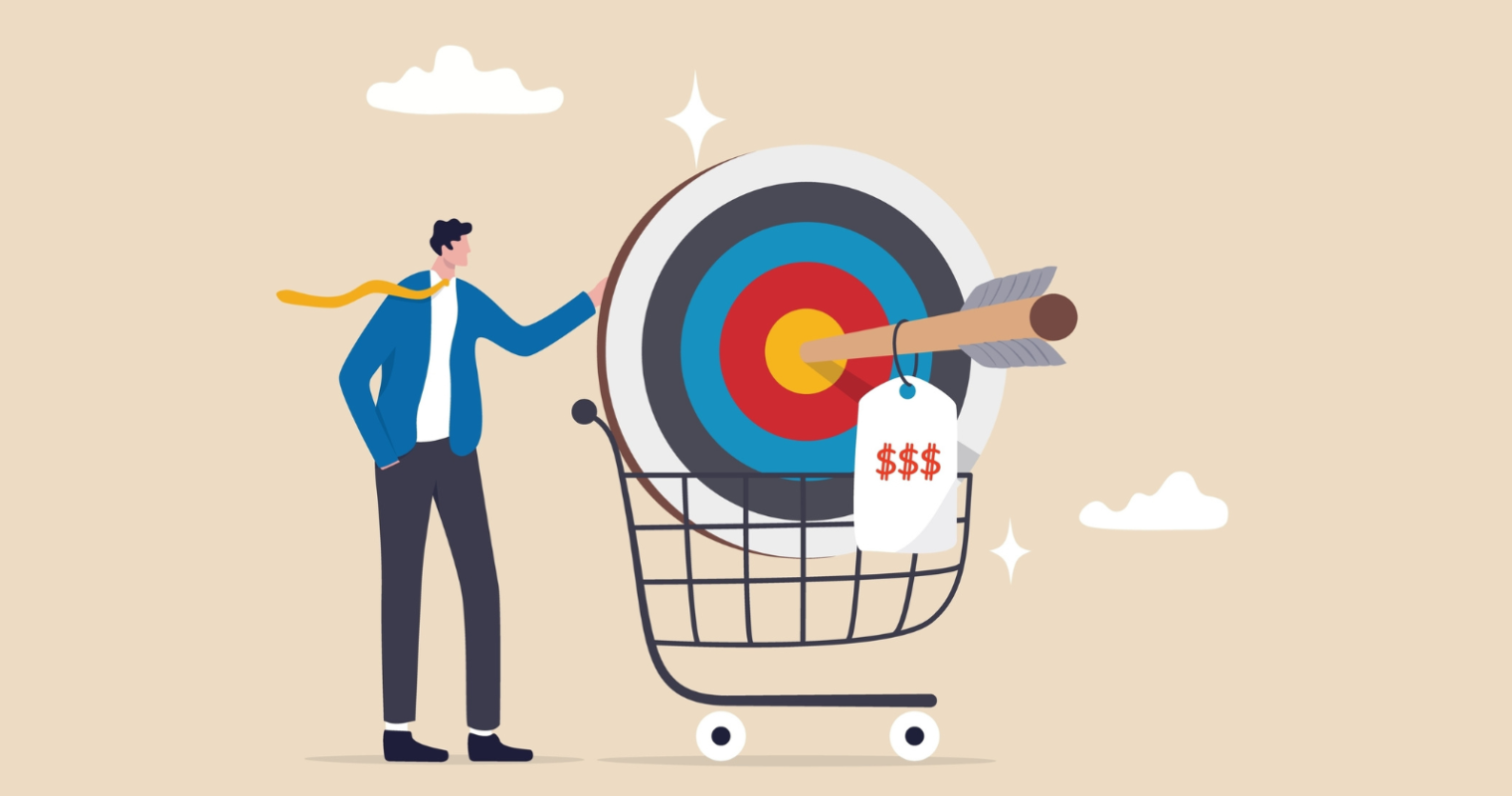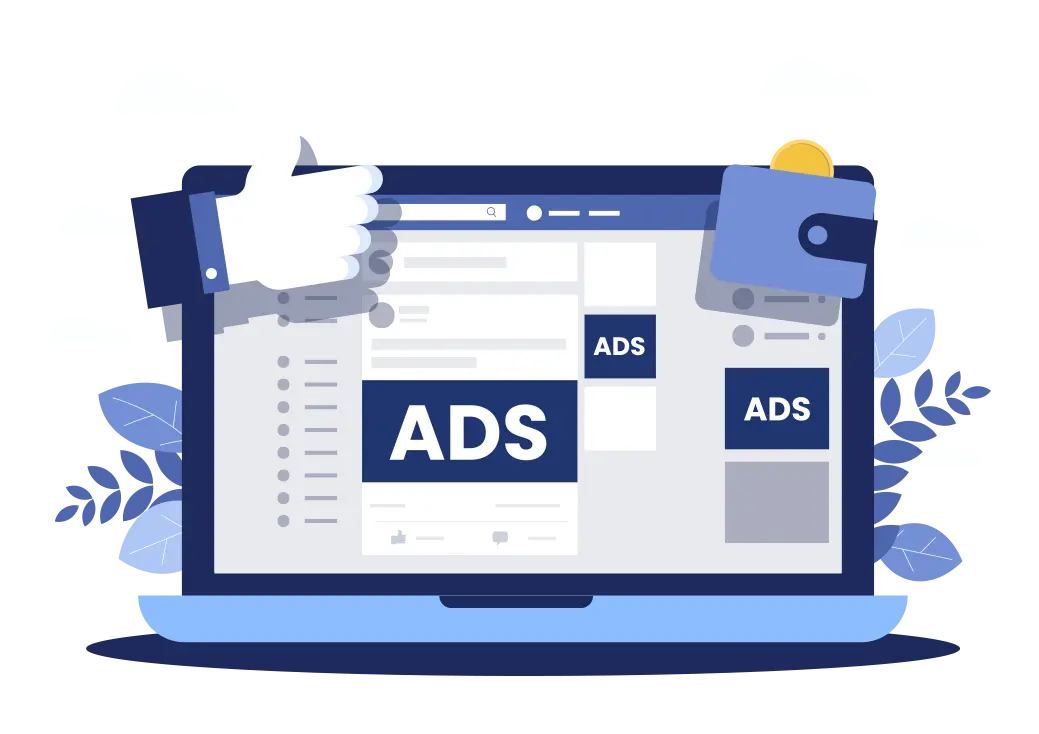Facebook Ads vs. Google Ads: Which is better for eCommerce business?
We're going to compare Google Ads and Facebook Ads. Both are powerful tools for your eCommerce business, but they each have their own strengths and weaknesses. Google Ads is best for brands, products, or services people are actively searching for, e.g. HVAC installer. In contrast, Facebook is better for brands looking to build awareness, like a brand-new restaurant in town.
Table of contents:
- Google Ads vs. Facebook Ads: The Basics
- How Google Ads Work for Ecommerce
- How Facebook Ads Work for eCommerce
- Google Ads vs. Facebook Ads for eCommerce business Full Comparison:
- Payment Structure
- Clickthrough rate
- Intent of users
- Average Conversion rate
- Ease of Use
- Ad Placements Options
- Integrating with other platforms
- Customer service
This guide covers everything from cost-per-click (CPC) to conversion rates to decide which platform is best for your business. Let's start from the basics.
Google Ads vs. Facebook Ads: The Basics

At the most basic level, Facebook is a social media platform, and Google is an online search tool. Both are free to use and available to anyone with an internet connection.
Facebook is a social network where people connect with friends and family; Google provides search results for the web. You can use both tools for advertising your business.
However, Facebook and Google have made their platforms more business-friendly. Both now offer advertising services that allow you to market your products directly to potential customers. Regarding eCommerce, Facebook Ads and Google Ads are the two most prominent players in the industry. They're also similar in many ways:
- Both have a wide range of ad formats, from text ads to video.
- Both can target audiences based on location, demographics, and interests. Both offer excellent targeting capabilities.
- Both have a vast audience.
- Both are easy to use
- Both provide detailed reports on your campaigns.
However, marketers and e-commerce businesses use the features of Facebook and google ads differently; they each achieve different marketing goals.
Statistics say that over $58.11 billion will be spent on Facebook ads in 2022, which is second to google ads revenue of over $70.20 billion. Many businesses use Facebook ads for lead generation and Google Ads for e-commerce conversion.
You must understand how each platform works and how well it fits into your business's marketing goals to make the most of e-commerce ad strategies. Let's take a look at Google Ads and Facebook Ads below:
How Google Ads Work for Ecommerce
Google Ads is an online advertising platform that allows businesses to target customers based on their interests and demographics. Whether trying to sell products or services, Google Ads will help you get the right audience.
Google Ads works by bringing users to your website through search engine results pages (SERPs). It also can show ads across several different platforms, including YouTube and Gmail.
You can create a campaign by choosing an ad group and adding keywords that describe your product or service. From there, Google will show your ads to people who may be interested in what you have to offer. The great thing about Google Ads is that it allows you to track the performance of your campaigns so that you can optimize them over time.
Ecommerce businesses can use Google Ads to drive traffic to their website or app, increase user engagement, and generate sales team leads.
Who Can Use Google Ads?
Google Ads is best suited for businesses that sell products online. You can also use it to promote your brand or generate leads. Still, you won't get as much bang for your buck as running ads for specific products (although this could be a good strategy if you have a lot of inventory).
Examples of good businesses to use Google Ads for include:
- Online retailers selling physical products (clothing, accessories, electronics, etc.)
- Software companies that offer a free trial or demo version of their product
- Online businesses that sell information products like ebooks and courses
- Industry-specific businesses that offer a subscription service (like an accounting firm or financial planning company)
- Local businesses that sell physical products and services
How Facebook Ads Work for eCommerce

Facebook is another place where you can advertise your business. Like Google Ads, Facebook allows you to create a campaign and target specific audiences based on demographics or interests. You can also set up conversion tracking for your ads to see how many sales each generates.
The social platform offers several different ads, including video, carousel, and collection. You can also create your own custom audiences from existing customers or people who visit your website. With Facebook Ads, you can customize the demographic targeting options based on age group, location, and interest.
Facebook has a large audience, and getting your ads in front of the right people for e-commerce brand awareness and sales is easy.
Who can use Facebook Ads?
Facebook Ads is an excellent tool for eCommerce businesses, especially those with an existing customer base. It's also ideal for companies that want to reach their target audience and drive them back to their website.
You can use Facebook Ads to:
- Promote your products and services
- Drive traffic to your website
- Generate leads for your business
- Promote special offers or deals (like discounts and free shipping)
You can target customers by age, gender, location, interests, behaviors, and more. Facebook also has built-in retargeting features that let you show ads to people who have visited your site in the past.
In general, Facebook Ads are best for businesses with a large audience of people who are likely to purchase something from them soon.
Google Ads vs. Facebook Ads for eCommerce business: Full Comparison

We'll compare the two ads on several vital points.
1- Google Ads vs. Facebook Ads: Payment Structure
Google Ads is a pay-as-you-go model. You only pay when someone clicks on an ad, and Google charges a CPC (cost per click) based on your ad type.
Facebook Ads has different payment options depending on the ad type:
Cost per click (CPC) - How much it costs to get someone to click your ad is the CPC. You only pay when someone clicks on your ad. The more competitive your niche, the higher this will be.
CPM (cost per thousand impressions) - This option allows you to pay for every 1,000 impressions your ads receive rather than each time someone clicks on them. This is better for brands looking to build their reputation and brand awareness. It's also a good option if you have a limited budget, as you won't pay until after your ads have been shown to 1,000 people.
Cost per action (CPA) - You only pay when someone takes action based on your ad (such as buying something). This can be used for lead generation or sales-focused campaigns.
2- Google Ads Vs. Facebook Ads: Clickthrough rate

In the world of eCommerce, the clickthrough rate is vital. It's like a measure of success. The higher your clickthrough rate, the more people click on your ads and visit your website. Google Ads has a higher average CTR than Facebook Ads does.
The average CTR for Google Ads is higher than for Facebook. This means that people are more likely to click on your ads if you use Google Ads than Facebook Ads.
However, this doesn’t mean that Facebook has a lower clickthrough rate than Google; it just means that the two companies have different approaches to advertising.
3- Google Ads vs. Facebook Ads: Intent of users
Google Ads attracts users looking for a specific thing, often a product or service. Facebook Ads attract a more general audience, people interested in what's happening worldwide and may be looking for information on various topics.
The differences in their users' intent will affect e-commerce ads differently. Google Ads is better for eCommerce businesses that want to drive purchases. At the same time, Facebook Ads are a better option for companies that want to attract leads and make sales later.
4- Google Ads vs. Facebook Ads: Average Conversion rate

The average conversion rate for Google Ads is around 4.40% in 2022, while the average conversion rate for Facebook Ads is about 9.20%.
This is due to the differences in their advertising platforms, targeting options, and the number of users. Google Ads has a more advanced system for targeting audiences likely to convert, so it's easier for eCommerce businesses to increase their conversion rates on this platform. Facebook Ads has less advanced targeting options but a larger audience that makes up for it.
However, the higher Facebook Ads conversion rate is due to its ability to target specific audiences in the large audience pool. When you run an effective campaign, it will be easier to convert customers on Facebook than through Google Ads.
Discover Top 26 Ecommerce Conversion Rate Optimization Strategies
5- Google Ads vs Facebook Ads: Ease of Use
Facebook Ads is much easier to use than Google Ads. While you can track and manage your campaigns through both platforms, Facebook Ads offers more help and support options. This makes it easier for new business owners to create effective campaigns without hiring an expert.
Google Ads is a more advanced platform and can be challenging to use. It has a more complicated setup process and learning how all the features work together takes time. Plus, there isn't as much support for new users on Facebook Ads compared to Google Ads.
6- Google Ads vs Facebook Ads: Targeting Options

Facebook targeting options are more comprehensive as they tend to collect more user information. Targeting options include age, gender, location, interests, and behaviors. With Google Ads, the focus is more on keywords and bid management. You can't target audiences based on demographics like age or gender.
For example, if you want to target users in a specific age range, you’ll have to use Google Ads. With Facebook Ads, you can create custom audiences based on demographic data from their profiles (if they’ve filled them out). This is much more powerful as it allows for highly-targeted ads that resonate with a specific audience.
7- Google Ads vs Facebook Ads: Ad Placements Options
Facebook Ads can appear in feeds, Marketplace of Facebook, Facebook Messenger, Instagram, and other platforms.
Google Ads appear in search results and on the Google Display Network (GDN). These are Youtube, Gmail, and search engines like Ask.com.
Your control of where and how your ads appear is limited by Facebook's algorithm. The GDN allows you to choose where your ads will occur, but only within the context of search keywords and topics. Google Ads gives you more control over where and when your ads are shown, but this comes at a higher cost per click.
8- Google Ads vs Facebook Ads: Integrating with other platforms
Google Ads and Facebook Ads integrate well with most major marketing software platforms, such as HubSpot, Salesforce, and converted.in. Google Ads is also integrated with Google Analytics, allowing you to track the success of your campaigns.
Facebook Ads integrates well with other platforms, such as MailChimp and Salesforce. It also offers a conversion tracking feature that helps you measure the effectiveness of your ads in driving sales.
9- Google Ads vs Facebook Ads: Customer service
Google has better customer support than Facebook. Your options with Google include via phone, live chat, help centers, and regular updates on how to use the platform. However, Facebook offers support through email and live chat. It also provides a community forum where you can get answers to your questions from other people who have used Facebook Ads successfully.
Which is Better for eCommerce marketing: Facebook or Google?
Which advertising platform is better for your e-commerce business depends on:
- your target audience
- your budget
- your unique business goals.
More than 80% of online shoppers start their product searches on Google or Facebook. Both are great platforms for building awareness, driving traffic, and increasing sales.
And while they have many similarities, there's one significant difference between them that can help you decide which platform is best for your business. Google ads are based on search intent. Facebook ads are based on social context (what people like and share).
Google Ads will likely be more effective if your goal is to drive sales. If you’re looking for brand awareness or website traffic, Facebook may be a better option.
However, remember this is not a zero-sum game. You can use both of these platforms to reach your customers. But you will need automation to maximize both potentials so that neither platform interfere with the other. You can automate Facebook ads and Google ads with AI platforms like Convertedin.
Convertedin is an AI-powered platform that supports marketers in creating, managing, and measuring their Facebook and Google Ads campaigns. The platform makes it easy for you to create and manage ads without any manual input from your side.
It can manage your budgets, optimize ads, create new ones on demand, and even monitor the results. In addition to saving you time, this allows you to focus on other aspects of your business while generating leads and sales.
Get started with a free demo.
